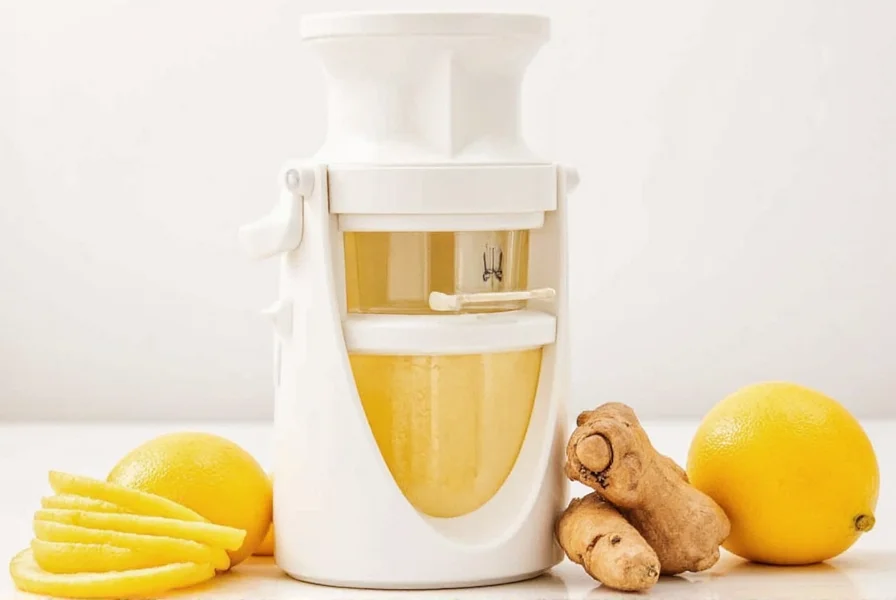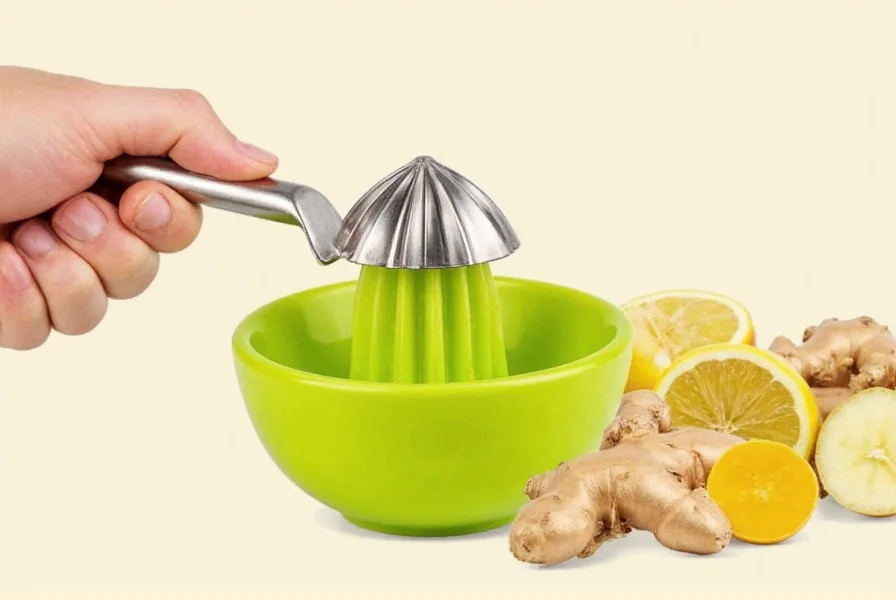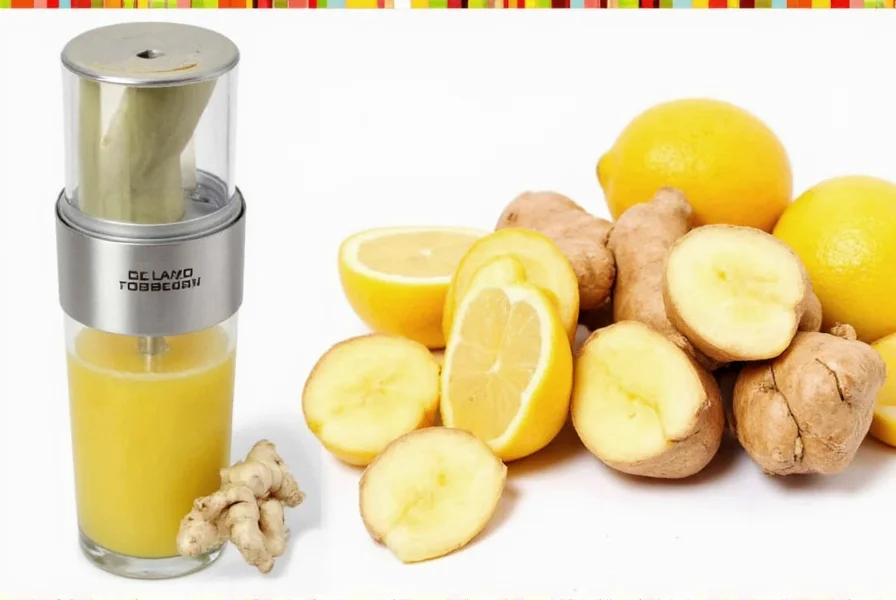Extracting juice from ginger can be challenging due to its dense, fibrous nature. Standard juicers often struggle with ginger's tough fibers, resulting in low yield and excessive pulp. Specialized ginger juicers solve this problem through targeted design features that maximize extraction efficiency while preserving ginger's potent flavor compounds and health-promoting properties.
Why Ginger Requires Specialized Extraction Tools
Ginger's unique cellular structure contains valuable compounds like gingerol that provide its distinctive flavor and health benefits. When using inappropriate tools, these compounds remain trapped in the fibrous pulp. A proper ginger juicer applies focused pressure to rupture ginger's tough fibers without generating excessive heat that could degrade delicate compounds.
Types of Ginger Juicers Compared
| Type | Best For | Yield Efficiency | Cleaning Difficulty | Price Range |
|---|---|---|---|---|
| Manual Press | Occasional home use | Medium-High | Easy | $15-$35 |
| Electric Citrus Press | Regular users needing speed | Medium | Moderate | $40-$80 |
| Dedicated Ginger Press | Frequent ginger users | High | Moderate | $25-$60 |
| Microplane Grater + Press | Small-batch extraction | Low-Medium | Easy | $10-$20 |
Key Features to Consider When Choosing
When selecting the best ginger juicer for your needs, evaluate these critical factors:
- Chamber size - Should accommodate typical ginger root dimensions (1-2 inches diameter)
- Pressure mechanism - Look for lever systems that multiply hand force for better extraction
- Material quality - Stainless steel components resist ginger's natural acidity better than plastic
- Drip-free design - Prevents messy countertop cleanup during operation
- Storage footprint - Consider space constraints in your kitchen

Proper Technique for Maximum Yield
Even the best ginger juicer requires proper technique to achieve optimal results. Follow these steps for maximum juice extraction:
- Peel ginger root completely using a spoon's edge to avoid removing too much flesh
- Cut ginger into small pieces that fit your juicer's chamber (typically 1-2 inch chunks)
- For manual presses, apply steady, increasing pressure rather than quick jerks
- Rotate ginger pieces during pressing to expose fresh surfaces
- Press until only dry, fibrous pulp remains
- Strain juice through a fine mesh sieve to remove any remaining pulp
Maintenance Tips for Longevity
Ginger's natural oils and fibers can accumulate in juicer components. Proper maintenance extends your tool's life:
- Clean immediately after use before ginger residue dries and hardens
- Use a small brush to remove fibers from crevices and mesh filters
- For stainless steel models, occasional vinegar soak removes mineral deposits
- Ensure all parts are completely dry before storage to prevent mold growth
- Lubricate moving parts of manual presses with food-grade mineral oil annually
Creative Applications for Fresh Ginger Juice
Freshly extracted ginger juice offers versatility beyond basic culinary uses:
- Immunity shots - Mix with lemon juice and honey for morning wellness boost
- Marinades - Penetrates proteins more effectively than grated ginger
- Cocktail ingredient - Creates smoother texture in ginger-forward drinks
- Face toner - Diluted with water for antioxidant skincare benefits
- Baking enhancer - Distributes flavor evenly in cakes and cookies

Manual vs Electric: Which Ginger Juicer Suits Your Needs?
Home cooks often debate between manual and electric options when selecting the best ginger juicer for home use. Manual presses typically offer better yield for ginger specifically, as their focused pressure works more effectively on small, dense roots. Electric juicers provide speed advantages for frequent users but may waste more ginger material due to their broader extraction mechanisms designed for citrus fruits.
Consider your usage frequency when making this decision. Occasional users preparing ginger shots once or twice weekly will find manual presses sufficient and more space-efficient. Those using ginger daily in cooking or wellness routines might justify the investment in a dedicated electric model for time savings.
Maximizing Value from Your Ginger Investment
Ginger can be expensive, so efficient extraction matters. The most effective ginger juicers typically yield 30-50% more juice than manual grating methods. To maximize your investment:
- Store unpeeled ginger in the freezer for easier processing
- Use leftover pulp in stir-fries, compost, or as exfoliating scrub
- Process larger quantities when ginger is in season for freezing
- Choose organic ginger when possible to avoid pesticide residues in juice











 浙公网安备
33010002000092号
浙公网安备
33010002000092号 浙B2-20120091-4
浙B2-20120091-4